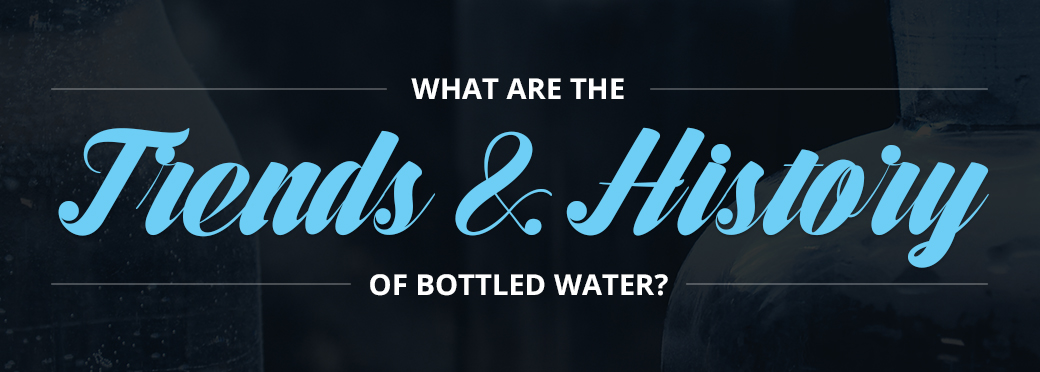
What is the History and Future of Bottled Water?
May 29, 2015It flows – as nature’s essence – through every facet of our human existence: hydrogen dioxide. It is the elixir of life on earth and in the universe, and we’ve learned to put it in a bottle.
We have acquired the ability to sustain ourselves and to recognize our need for this flowing element; it is water.
While we at Azure Water obviously recognize water’s supreme significance in our lives, we are going to explore trends in bottled water and examine the origins of putting water in a container for convenient use.
The History of Water in a Bottle
Precise dates of the first use of bottled water are not known, but some historians estimate that Hippocrates, the ancient Greek physician, began writing about the importance of water in 400 B.C.
Historians point to Britain in 1622 when water from the Holy Well was first bottled.
Europeans and Americans increasingly wanted convenient access to water in bottles as the popularity of spas and water therapy began growing in the 17th and 18th centuries.
Jackson’s Spa in Boston is credited with bottling water for commercial use for the first time in 1767. Early consumers believed drinking bottled water from mineral springs would treat common ailments.
Bottled mineral water’s popularity soared, leading to the production of imitation mineral water. Entrepreneurs began developing carbonated water to imitate the feel of spring water. Joseph Hawkins received the first U.S. patent in 1809 for “imitation” mineral water.
With advances in glass manufacturing and lower material costs in the 19th century, production of bottled water grew to accommodate increasing demand and popularity. This was due mostly to the perception that municipal water supplies were contaminated.
By the mid 1800s, one of America’s most popular bottlers, Saratoga Springs, produced more than 7 million bottles of water annually.
At the turn of the century, demand for bottled water declined with the introduction of water chlorination in municipal systems. Chlorination relieved some of the public’s health concerns.
Bottled water remained relatively popular in Europe, especially in the latter half of the 20th century.
Perrier is credited with reviving interest in bottled water consumption in 1977.
What Will We Drink in the Future?
Foodmanufacturing.com expects demand for bottled water to continue to rise in the years ahead.
Beverage Marketing Corporation points to a sharp rise (4.3 percent) in bottled water consumption from 2012 to 2013. Per capita consumption also rose by 3.3 percent in 2013 with every American consuming on average of 31.8 gallons a year.
Sales of bottled water rose by a significant margin during that period: 4.1 percent to $12.3 billion.
Michael Bellas, BMC’s CEO, predicts bottled water will soon surpass soda as Americans’ top beverage, mostly for health reasons.
“All signs point to U.S. consumers’ already displayed thirst for bottled water continuing in the years ahead. Changes in per capita consumption indicate persistent interest in a product that consumers embrace as a healthful alternative to other beverages,” said Gary Hemphill, BMC’s vice president of information services.
Azure Water has a facility in Leesburg, Florida with state-of-the-art equipment that is able to generate 5,000 cases a day. We can produce custom-bottle shapes, and fill, seal and label your bottles. Are you looking to expand your business or have questions about co-packing or our capabilities, contact us.
Connect with us on Social Media:


